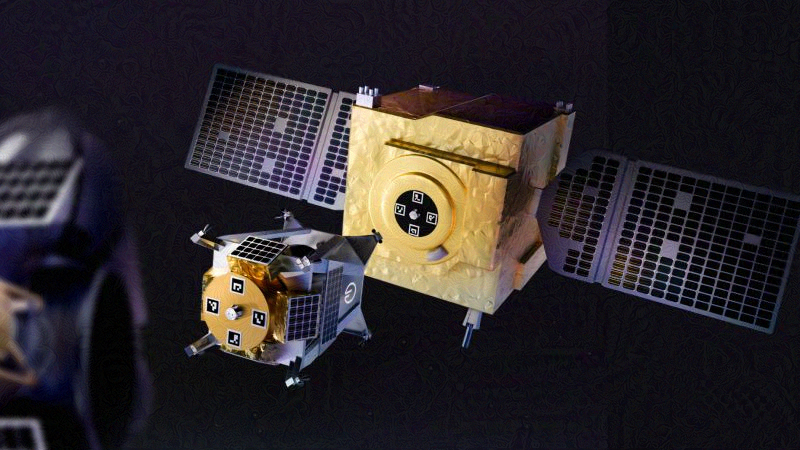Half of them are still functioning, the other half have either burned up in the atmosphere or are useless pieces of metal. The European Space Agency estimates that over 600 break-ups, explosions, collisions, or anomalies have occurred to date, posing a threat to the International Space Station and other satellites. There are more than 30,000 objects larger than 10 centimeters (3.94 inches) and more than 130 million fragments up to 1 centimeter (0.39 inches) around the planet. Satellites should be refueled instead of being destroyed once they run out of power to help clean up the debris. The CEO of a Colorado-based company says that he wants to change that. When satellites run out of fuel, you can't keep them in the right place, and they become dangerous debris, floating around at high speeds. The lack of fuel creates a paradigm in which people design their missions around moving as little as possible. We can't upgrade anything, we can't have repairs, and we can't inspect if it breaks. That is the solution we are trying to deliver.
Space surgery.
In 2007, NASA and the US Department of Defense collaborated to launch Orbital Express, a mission involving two purpose-built satellites that successfully docked and exchanged fuel. NASA worked on the Robotic Refueling Mission, which explored the challenges of refueling existing satellites. The agency is working on OSAM-1, which was supposed to be launched in 2026, but will attempt to grab and refuel Landsat-7, an Earth-observation satellite that has run out of gas They had to cut into the satellite to get access to the fuel pipes. This allows for impressive satellite repair capability, but it comes at a price. Instead, it wants to focus on those that have yet to launch, and equip them with a standardized port, which would simplify the operation, keeping the price down. There is no commercially available fuel port for a satellite to be refueled. We are a gas cap company and we are working on a gas cap for the bustling space economy.
The future Orbit Fab Shuttle will deliver fuel to satellites in need.
The system that is being worked on by Orbit Fab includes a fuel port, shuttles which can deliver fuel to a satellite in need, and refueling tanker, which the shuttles could pick up the fuel from. The company advertised a price of $20 million for on-orbit delivery of hydrazine, the most common satellite propellant. The next launch is scheduled for 2024. They are treating it as a demonstration at the moment, but it is getting a lot of interest from people that understand the value of refueling.
The first private customer will be Astroscale, a Japanese company that has developed the first satellite designed for refueling.
Simone D'Amico is an associate professor of astronautics who is not affiliated with Orbit Fab and she says that on-orbit servicing is one of the keys to a safe and sustainable development of space. He wants to know if you could imagine a ground mobility infrastructure without gas stations and auto repair shops. The development of space infrastructure and the proliferation of space assets is reaching a critical volume that is not sustainable without a change of paradigm.
There are many reasons why this hasn't happened before, including a lack of perceived need given the limited number of spacecraft, and the fact that on-orbit servicing technology has only now become economically viable due to progress in satellite miniaturization. He believes that Orbit Fab is the only company in the world that has positioned itself to deploy gas stations in space. In the long term, I think the approach of Orbit Fab can pay off, but in the short term, it has high risk since satellites have to be designed with reusability in mind.
Astroscale plans to inspect, repair and upgrade satellites in the near future, and thus Orbit Fab wants to be a supplier of fuel to them. It is thought that succeeding in this sector could convince the big telecom corporations to change their business model and embrace refueling and servicing. Once the pattern of sending and delivering fuel is established, the next step is to start making the fuel there. He says that in 10 or 15 years, they would like to build a refinery in space that would process air and water for commercial space stations, 3D printers, and minerals to grow plants. We want to be the industrial chemical supplier.

